Benoit Guénard | Béatrice Lecroq | Benjamin Blanchard | Kyoko Tadaoka | Sandrine Burriel | Naomi Yuzuki | Keita Ikegami | Juliette Martin | Brett Morgan | Yafei Mao | Hitomi Shinzato | John Deyrup | Matti Krueger |Yuna Hattori | Maggie Mars | Jason Ball | Osamu Horiguchi | Aina Urano | Kotaro Fujiyoshi | Tori McGruer | Menglin Wang | Sam Ross | Gaurav Agavekar | Chris Campbell | Nitish Narula | Julia Janicki | Patricia Wepfer | Clive Darwell | Adam Khalife | Cong Liu | Alexandre Ferreira | Masashi Yoshimura | Masako Ogasawara | Mayuko Suwabe | Takuma Yoshida | Adrian Richter | April Lamb | Michael Izumiyama | Mohamed Boubakour | Georg Fischer | Masato Hirota | Kota Ishikawa | Kenneth Dudley | Nick Friedman | Nao Takashina | Susan Kennedy | Yuka Suzuki | Evropi Toulkeridou | Dan Warren | Nurit Eliash | Leonardo Tozetto | Francisco Hita Garcia | Jamie Kass | Arthur Matte | Jordan Drapin | Fumika Azuma | Henry Cerbone | Minsoo Dong | Kaylin Chong | Graceanne Tarsa | Leonardo Tozetto | Jocelyn Wang | Hlib Burtsev | Adrian Richter | Alexandre Casadei Ferreira | Azumi Kudaka | Miyuki Suenaga | Dimitris Petsopoulos | Gaurav Agavekar | Yazmín Zurápiti | Shubham Gautam | Christine Sosiak | Larisa Kiseleva | Julian Katzke
Benoit Guénard, Postdoctoral Researcher (2012-2014)
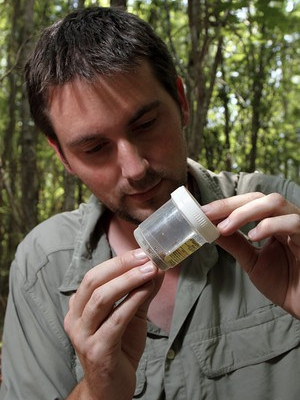
Through my work I try to characterize and understand what shapes diversity patterns at local, regional and global scales. I use ants as a model organism to approach questions related to regional and global diversity patterns, impact of invasive species and anthropogenic disturbances on communities, evolution of communities and their distribution through geological times, and the evolution of foraging or nesting strategies in ants.
Websites:
- Professional website
- Ant Genera of the World
- Formicidae (pictures of ants and other small creatures)
Béatrice Lecroq, Postdoctoral Researcher (2012-2014)
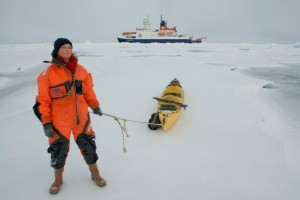
My field of interest is biodiversity, speciation mechanisms and the species concept. What makes an area rich in species? Why do some taxa display higher diversity than others? What traits characterize rare species and what is their ecological relevance? My past research has focused on deep-sea environments. I have investigated benthic taxa and in particular the richness and biogeography of foraminifera using environmental DNA from the ocean floor. Recently I have begun to study terrestrial systems, using ants as a model organism. I hope to take advantage of their high diversity, their numerous morphological features and their complex body surface chemistry to infer phylogeny, test evolutionary hypotheses and tackle the issue of genetic and phenotypic borders between species.
Benjamin Blanchard, Visiting Student (Summer 2013)
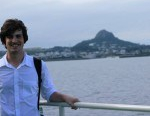 I am interested in biodiversity, particularly the ways in which ecological factors affect ant community diversity and morphology. I recently completed my B.S. in Ecology and Evolutionary Biology at the University of Michigan, where I worked on the curation and taxonomy of Pacific island ants. My previous research includes phylogenetic work on the Pacific species of the Camponotus maculatus group, and a study on the impacts of ecological factors on ant community diversity and composition on Konza Prairie, a tallgrass ecosystem. As part of my summer internship at OIST, I will be heading to China with Benoit Guénard and Cong Liu to collect ants at the Xishuangbanna Tropical Botanical Gardens in Yunnan. The collections will benefit the ongoing Pheidole project, as well as address potential impacts of anthropogenic disturbance on the ant community at Xishuangbanna.
I am interested in biodiversity, particularly the ways in which ecological factors affect ant community diversity and morphology. I recently completed my B.S. in Ecology and Evolutionary Biology at the University of Michigan, where I worked on the curation and taxonomy of Pacific island ants. My previous research includes phylogenetic work on the Pacific species of the Camponotus maculatus group, and a study on the impacts of ecological factors on ant community diversity and composition on Konza Prairie, a tallgrass ecosystem. As part of my summer internship at OIST, I will be heading to China with Benoit Guénard and Cong Liu to collect ants at the Xishuangbanna Tropical Botanical Gardens in Yunnan. The collections will benefit the ongoing Pheidole project, as well as address potential impacts of anthropogenic disturbance on the ant community at Xishuangbanna.
Naomi Yuzuki, Research Assistant (2013-2014)
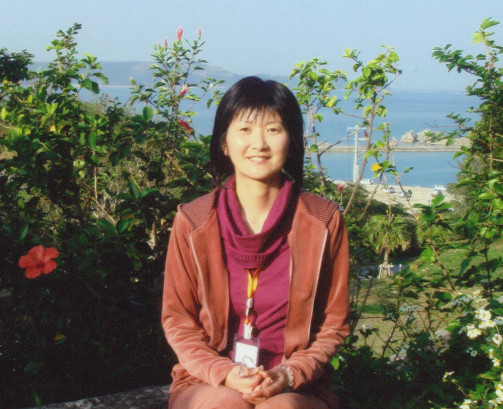
Since I was fascinated by the beautiful nature of Okinawa, as well as its gentle and peaceful people, I moved here from Tokyo. In the lab, my work involved expanding the main database of the GABI project by entering literature records for ant species distributions.
Sandrine Burriel, Computing Technician (2013)

I am a computer scientist who graduated with MScs from Supélec and the University of Paris-Sud. After working several years as a technical translator and writer, I joined the Arilab in 2013 to handle all computer related questions, from our 3D screen to this very website! In September 2013, I began my PhD at OIST. I am interested in theoretical/mathematical aspects of biology, such as what defines a species, or how did organisms transition from unicellularity to multicellularity.
Kyoko Tadaoka, Research Assistant (2013)

Kyoko’s role in the lab ranges from helping Benoit and Béatrice to establish database for their research, as well as to give translation help with Japanese literatures. She is also a graduate of MSc in Holistic Science from Schumacher College, University of Plymouth in UK. Her interest is in the Education for Sustainability, especially the possibility of Buddhist Debate as a Sustainable pedagogy. Plays Sanshin, the Okinawan traditional instrument.
Keita Ikegami, Rotation Student (Spring 2013)
Keita’s rotation focused on consolidating GIS datasets to analyze landscape patterns of species distributions in Fiji.
Juliette Martin, Intern (Summer 2014)
While here, Juliette worked on segmentation of ant CT scans.
Brett Morgan, Intern (Spring 2015)
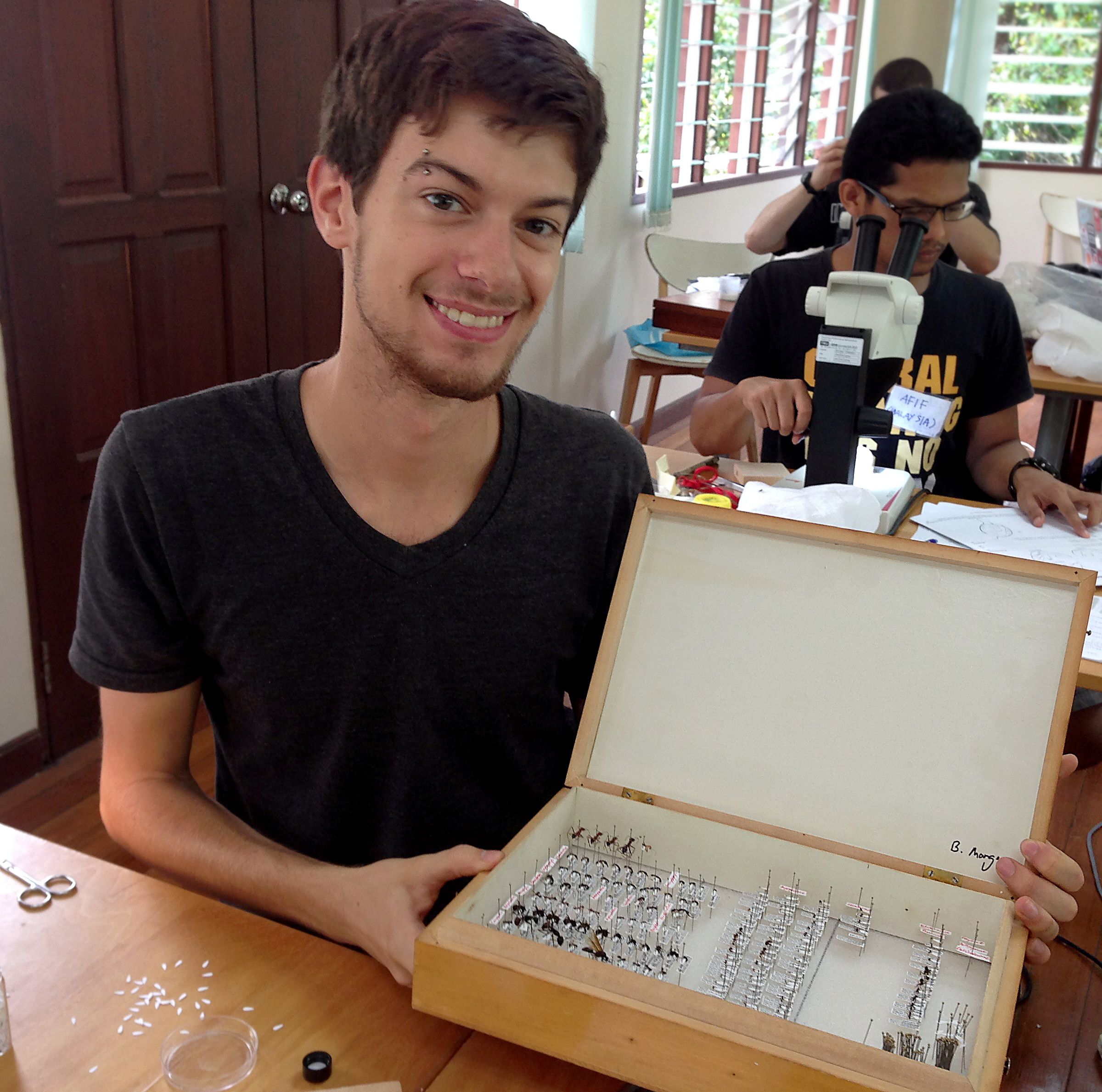
To me, biological evolution is the most fascinating phenomenon that has ever occurred and I’m interested in learning about it on both genetic and macroecological scales. In the Arilab I am investigating phylogeographic patterns in the Malagasy Pheidole, a diverse ant genus that may have colonized Madagascar through a single dispersal event from mainland Africa. I’m using GIS software to model climatic, biotic, and edaphic factors across species distributions, and will be using that information along with our Pheidole phylogeny to infer the evolution of niche differentiation within the genus.
Yafei Mao, Rotation Student (Spring 2015)
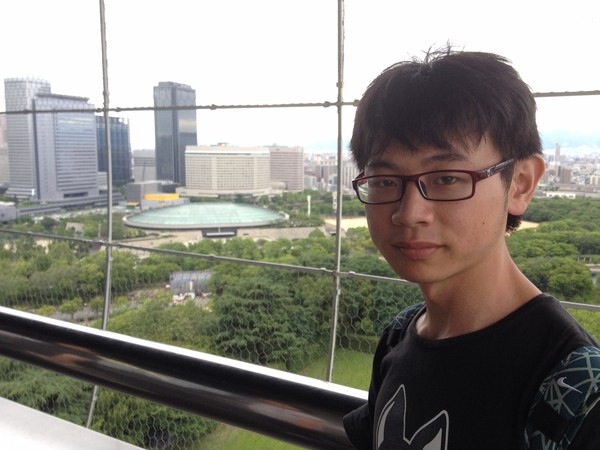
I am a Ph.D student in OIST, now, I am taking my second rotation in Economo Lab. And I am interesting on integrating ecology insights and evolution thoughts into thinking about what happened in nature. For my rotation project, I am working on the mechanism and dynamic processes of Pheidole community assembly in New Guinea.
Hitomi Shinzato, Research Administrator

Shinzato-san is an expert in the administration side of scientific research. She handles many different jobs in the lab, from keeping track of budget to helping us with Japanese. Recently she also has been participating in field work and ant collecting, and came to the jungle with us to Iriomote. As a native Okinawan with extensive local knowledge, she is an indispensable member of the team!
John Deyrup, Research Technician
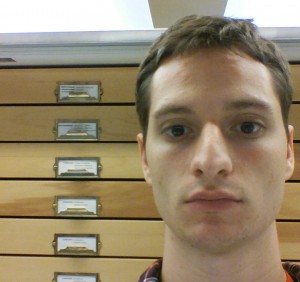
After finishing my Bachelors of Science in Biology at Dickinson College, I went to Rutgers University for my Masters in Biology. At Rutgers I studied molecular phylogenetics and cellular biology. I examined developmental pathways in Diabetes, and phylogenetic methodology used to recreate the Dictyoptera lineage. At the Okinawa Institute of Science Technology I currently work as a laboratory technician.
Matti Krueger, Rotation Student (Summer 2015)
I am PhD student with a background in Cognitive Science and an interest in mechanisms that underly adaptivity.
Within the Biodiversity and Biocomplexity unit I am working on the development of algorithms for the image-based recognition of ant species which could allow non-taxonomists to identify a broad range of ants and accelerate research on species prevalence and dispersal.
Maggie Mars, Rotation Student (Summer 2015)
Yuna Hattori, Rotation Student (Summer 2015)

I am a first year PhD student and am currently doing out of field laboratory rotation in the Biodiversity and Biocomplexity unit. My background is in physics and I am working on mathematical modeling for biodiversity of coral reefs around the Western Pacific ocean.
Jason Ball, PhD Rotation Student (Summer 2016)

I am currently a first-year PhD student at OIST completing my third rotation in the Economo unit. My background is in physics – I received my B.S. from the University of Michigan and my M.S. from Rice University in Houston, Texas. Before coming to OIST I worked as a high school physics teacher for two years. Given that my research background is in low-temperature and semiconductor physics, working in the BBU is quite the change. I’m currently working on analyzing song and call data from the Meliphagidae (honeyeater) family and am excited to expand my skill set with the analytic techniques used in this unit.
Aina Urano, Intern (Summer 2016)
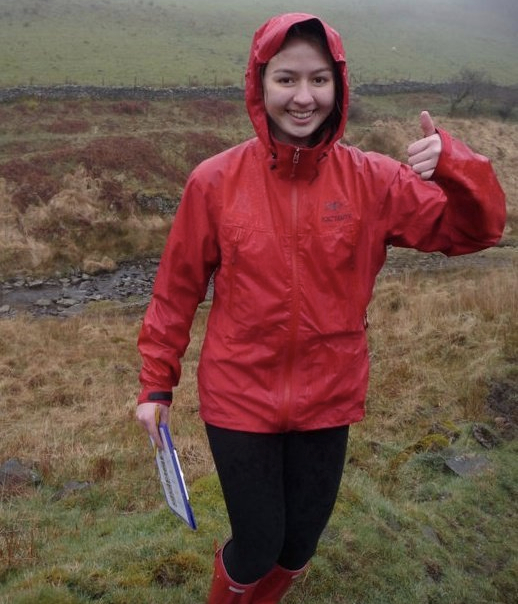
I recently graduated from University College London with a Geography (International) degree. My interests include environmental science and management, and understanding the way humans and ecosystems interact. I am working on the OKEON Chura-mori project, an environmental observation network set up to monitor Okinawa’s biodiversity and terrestrial environment. The project involves collaboration across Okinawa’s community, from schools to museums to universities, so I am able to use my Japanese and improve my understanding of local culture and how science and research can involve collaboration outside the lab. My goal is to learn as much as possible so that in the future I can work in a capacity where I facilitate understanding across cultures and systems, environmental and societal.
Osamu Horiguchi, Student (Summer 2016)
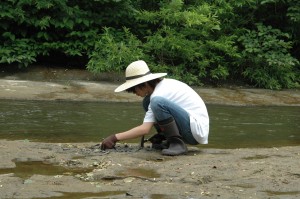
I am a GAP term student currently, and will become a first-year PhD student from this September. I’m pleased to belong to Economo unit and have a chance to train lab-work. During my bachelor course, I was working on functional difference between workers and soldiers of termites. I’m going to work on analyzing relationship between species morphology and their habitat.
Kotaro Fujiyoshi, Intern (Summer 2016)

Kotaro Fujiyoshi is a full-time third-year undergraduate student at the University of Oxford, studying Biological Sciences. For his thesis work he has looked into potential interactions between herbivore and oak seedlings in a drought setting in an oak ecosystem. He joined the Ari lab in the summer of 2016 under the supervision of Clive Darwell to look into fig wasp morphology, distinguishing wasp species and collecting samples for further DNA analysis. Clive’s work on fig wasps is ultimately set to lead to the elucidation of speciation mechanisms of the wasps, contributing to evolutionary theory. Kotaro very much enjoyed his stay, especially the field trip with Clive to the beautful Iriomote island, dubbed the “Galapagos of Eastern Asia”.
Tori McGruer, Intern (Fall 2016)
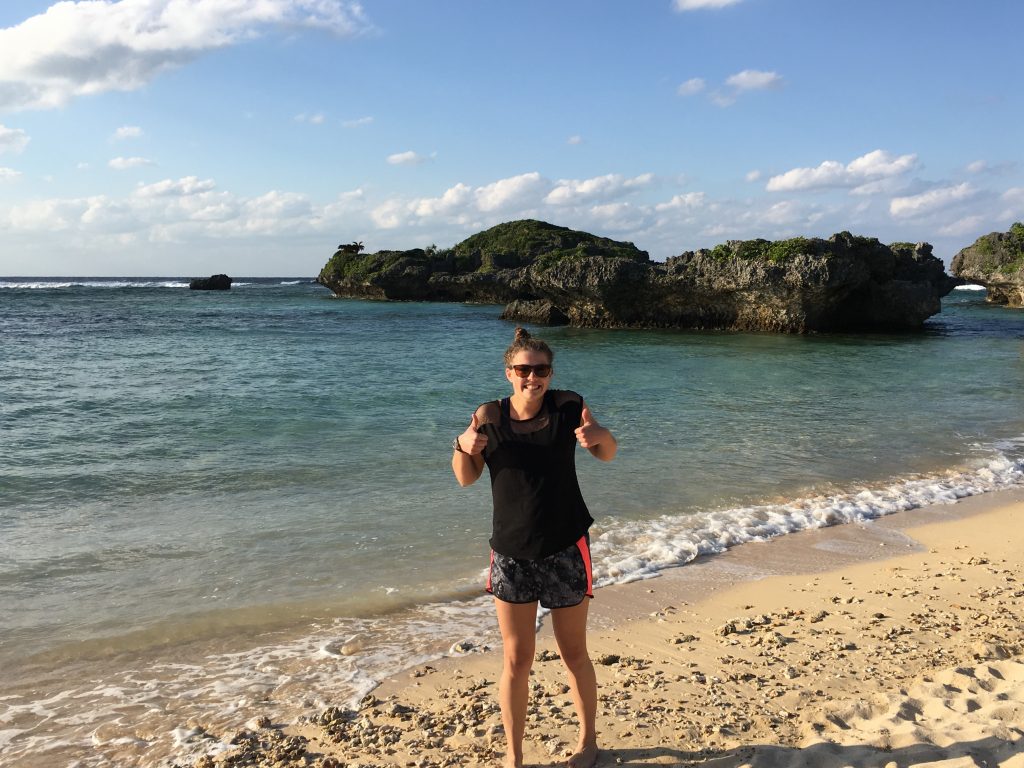 I am a currently finishing undergraduate degrees in Biology and Environmental Science at Northeastern University in Boston, MA. At OIST I had the opportunity to use ArcGIS, the Regional Ocean Modeling System (ROMS), and NetLogo to assess the movement and extent of nearshore sediment plumes which threaten local reef ecosystems. My interests lie in understanding how environmental changes impact biological and ecosystem function and I am continuing to expand my knowledge of data management and modeling programs so I can use them in my future research.
I am a currently finishing undergraduate degrees in Biology and Environmental Science at Northeastern University in Boston, MA. At OIST I had the opportunity to use ArcGIS, the Regional Ocean Modeling System (ROMS), and NetLogo to assess the movement and extent of nearshore sediment plumes which threaten local reef ecosystems. My interests lie in understanding how environmental changes impact biological and ecosystem function and I am continuing to expand my knowledge of data management and modeling programs so I can use them in my future research.
Menglin Wang, PhD Rotation Student
 I am Menglin, I just received my Masters degree from Xishuangbanna Tropical Botanical Garden, CAS on Botany. I spent three years studying reproductive biology of Bauhinia yunnanensis and Bauhinia glauca. I also focused on staminodes function in Bauhinia.
I am Menglin, I just received my Masters degree from Xishuangbanna Tropical Botanical Garden, CAS on Botany. I spent three years studying reproductive biology of Bauhinia yunnanensis and Bauhinia glauca. I also focused on staminodes function in Bauhinia.
Now I am focusing on the OKEON project, looking at ant biodiversity across different habitats.
Gaurav Agavekar, Intern (Spring 2017)
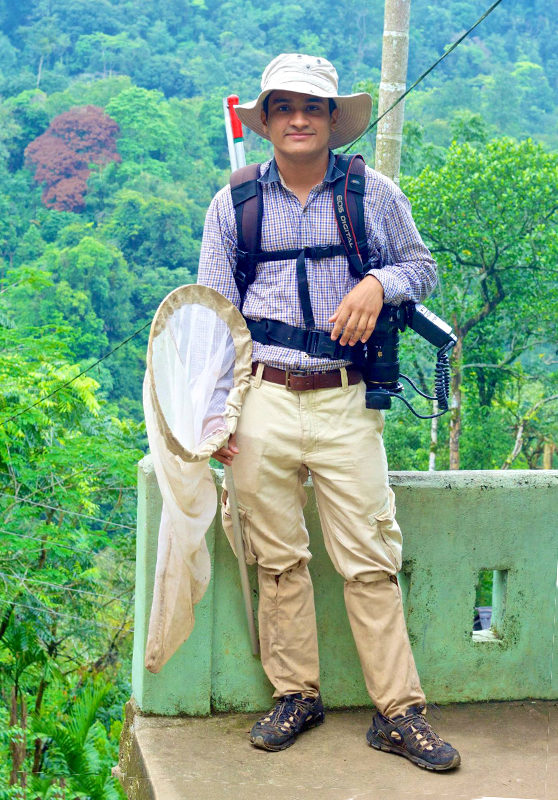 I have broad interests in understanding and documenting the patterns and processes of ecology and evolution of biodiversity, especially insects. I recently completed an MSc in Wildlife Biology and Conservation, offered in collaboration with Wildlife Conservation Society, at the National Centre for Biological Sciences in Bangalore, India. For my master’s thesis I studied diversity and community ecology of ants in Andaman Islands, and here at OIST I am working to write it up as scientific papers. Before moving to ants for my master’s, I did a variety of research on Indian butterflies.
I have broad interests in understanding and documenting the patterns and processes of ecology and evolution of biodiversity, especially insects. I recently completed an MSc in Wildlife Biology and Conservation, offered in collaboration with Wildlife Conservation Society, at the National Centre for Biological Sciences in Bangalore, India. For my master’s thesis I studied diversity and community ecology of ants in Andaman Islands, and here at OIST I am working to write it up as scientific papers. Before moving to ants for my master’s, I did a variety of research on Indian butterflies.
Chris Campbell, PhD Rotation Student
 Hi I’m Chris and I’m a rotation student for Evan’s Lab. I have a B.Sc in Physics and Applied Physics from the National University of Ireland Galway with an interest in fundamental Quantum Mechanics, leaning towards Spin-Orbit coupled BECs. From time to time I see small projects that would be interesting to learn. Being in a biology lab that has an emphasis on field work I can see potential in an area where I can use my skills. Therefore I’m currently prototyping a small unmanned camera trap that could be used for field data collection of ants.
Hi I’m Chris and I’m a rotation student for Evan’s Lab. I have a B.Sc in Physics and Applied Physics from the National University of Ireland Galway with an interest in fundamental Quantum Mechanics, leaning towards Spin-Orbit coupled BECs. From time to time I see small projects that would be interesting to learn. Being in a biology lab that has an emphasis on field work I can see potential in an area where I can use my skills. Therefore I’m currently prototyping a small unmanned camera trap that could be used for field data collection of ants.
In my freetime I enjoy long walks… bubble baths… and sounds.
Nitish Narula, Research Computing Technician
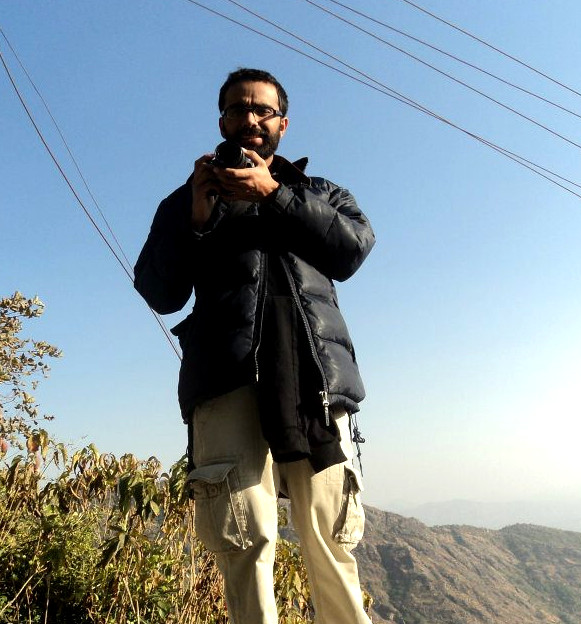 I recently graduated from New Mexico State University with an MS in Biology. While there, I was involved in an avian phylogenomic project using insertion-deletion characters. My academic background is in evolutionary biology, genomics, bioinformatics, and applied statistics. In the Economo lab, I work as a computing technician assisting the lab in its computational needs.
I recently graduated from New Mexico State University with an MS in Biology. While there, I was involved in an avian phylogenomic project using insertion-deletion characters. My academic background is in evolutionary biology, genomics, bioinformatics, and applied statistics. In the Economo lab, I work as a computing technician assisting the lab in its computational needs.
Julia Janicki, Computing Technician
 I received my M.S. in Entomology from UW-Madison, focusing on beetle taxonomy and biodiversity; specifically, I conducted a survey of the primitive weevils in Wisconsin. While taking on my project, I became interested in ways of visualizing data and took up skills in interactive mapping and front-end web development. As part of my M.S. project I created an interactive web mapping application for my survey results. With a team, I have recently built antmaps.org that visualizes the GABI database. My interests include biodiversity, conservation, evolutionary biology, taxonomy, cartography, data visualization, and web development.
I received my M.S. in Entomology from UW-Madison, focusing on beetle taxonomy and biodiversity; specifically, I conducted a survey of the primitive weevils in Wisconsin. While taking on my project, I became interested in ways of visualizing data and took up skills in interactive mapping and front-end web development. As part of my M.S. project I created an interactive web mapping application for my survey results. With a team, I have recently built antmaps.org that visualizes the GABI database. My interests include biodiversity, conservation, evolutionary biology, taxonomy, cartography, data visualization, and web development.
Websites
Patricia Wepfer, PhD Student
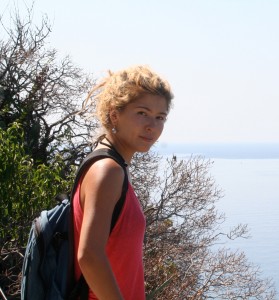 I am generally interested in spatial patterns of biodiversity and evolution in the context of biophysical/-geographical processes. In my PhD project I aim to understand diversification and connectivity in hard corals on the example of the genus Galaxea (Oculinidae). For this I collect fresh samples and museum specimens from all their Indo-Pacific distribution range and analyze them with population genomic tools.
I am generally interested in spatial patterns of biodiversity and evolution in the context of biophysical/-geographical processes. In my PhD project I aim to understand diversification and connectivity in hard corals on the example of the genus Galaxea (Oculinidae). For this I collect fresh samples and museum specimens from all their Indo-Pacific distribution range and analyze them with population genomic tools.
Other interests and previous projects include traditional botany, community ecology of ants and the variation in the symbiotic community in corals.
Clive Darwell, Postdoctoral Researcher
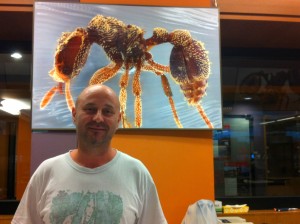 I am interested in how biodiversity is structured within ecosystems and what patterns and processes can be identified to describe and explain it, and more specifically, in how ecological interactions in conjunction with the evolutionary and biogeographical histories of species determine the composition, structure and function of biodiversity. I am also interested in how these relationships are maintained or modified according to both environmental factors (e.g., climate change) and additional biotic pressures (e.g., in the face of competition, predation, or parasitism). Before moving on to ants, I have studied the fig-wasp and yucca-moth obligate mutualism systems in previous research.
I am interested in how biodiversity is structured within ecosystems and what patterns and processes can be identified to describe and explain it, and more specifically, in how ecological interactions in conjunction with the evolutionary and biogeographical histories of species determine the composition, structure and function of biodiversity. I am also interested in how these relationships are maintained or modified according to both environmental factors (e.g., climate change) and additional biotic pressures (e.g., in the face of competition, predation, or parasitism). Before moving on to ants, I have studied the fig-wasp and yucca-moth obligate mutualism systems in previous research.
Adam Khalife, Intern (Fall-Spring 2017)
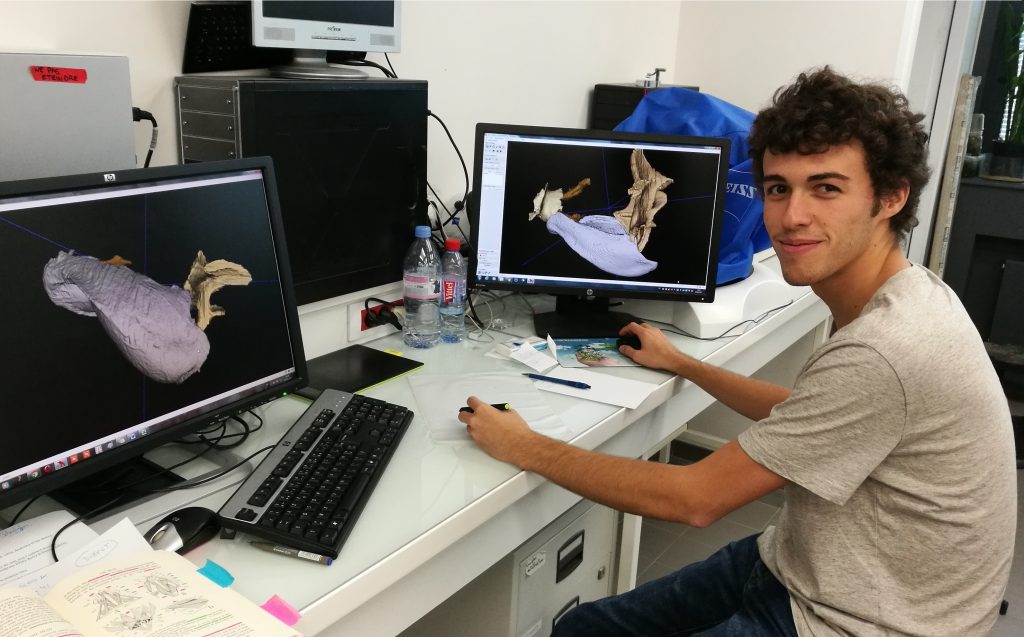 I recently graduated from the Ecole Normale Supérieure de Lyon in France with a major interest in Ecology, Evolution and Behaviour. I have just started a PhD in the Université Pierre et Marie Curie, Paris, France, that focuses on the link between the evolution of skeletomuscular morphology and behavioural repertoire in ants. One of my goals is to understand the mechanisms underlying the legendary strength of worker ants. I developed my freeware workflow to analyse microCT data, from segmentation to quick visualization. I am visiting the Economo Unit for six months to learn more about the technical aspect of microCT, study the anatomical differences between ant workers and queens, and get involved in a big project of the unit about morphological evolution in Madagascar ants using geometric morphometry (landmarking).
I recently graduated from the Ecole Normale Supérieure de Lyon in France with a major interest in Ecology, Evolution and Behaviour. I have just started a PhD in the Université Pierre et Marie Curie, Paris, France, that focuses on the link between the evolution of skeletomuscular morphology and behavioural repertoire in ants. One of my goals is to understand the mechanisms underlying the legendary strength of worker ants. I developed my freeware workflow to analyse microCT data, from segmentation to quick visualization. I am visiting the Economo Unit for six months to learn more about the technical aspect of microCT, study the anatomical differences between ant workers and queens, and get involved in a big project of the unit about morphological evolution in Madagascar ants using geometric morphometry (landmarking).
Sam Ross, Visiting Research Student (Summer 2018)
 I recently started a PhD with Ian Donohue at Trinity College Dublin on the impacts of global change on ecological stability. In the Economo Unit, I’ll be working with data collected as part of the OKEON-churamori project to test whether land-use and/or environmental variables affect the temporal dynamics of different species. Overall, I’m aiming to establish whether and how community regulation differs across Okinawa, and what this means for the temporal stability of the island’s bird and insect communities.
I recently started a PhD with Ian Donohue at Trinity College Dublin on the impacts of global change on ecological stability. In the Economo Unit, I’ll be working with data collected as part of the OKEON-churamori project to test whether land-use and/or environmental variables affect the temporal dynamics of different species. Overall, I’m aiming to establish whether and how community regulation differs across Okinawa, and what this means for the temporal stability of the island’s bird and insect communities.
Cong Liu, PhD Graduate
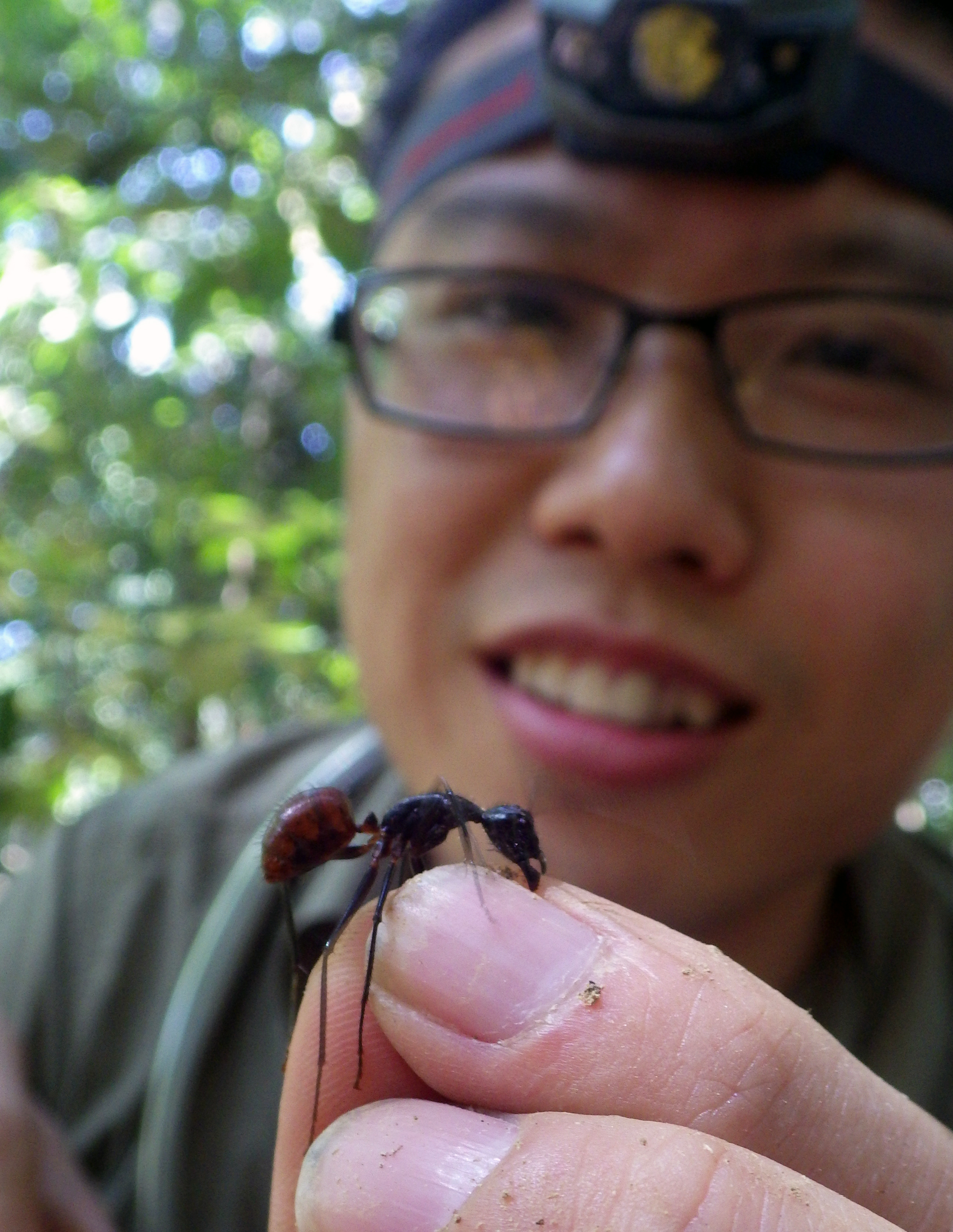 I spent three years in the tropical forest (Xishuangbanna, China) to study fig and fig wasp mutualism for my Master’s degree. My research at that time was to answer how and why the body size of fig wasps evolved and its implications for stability in a fig-pollinator mutualism. I also did a lot of works about the behavior and pollination biology of fig wasps. During the time in the tropical forest, I had developed a broad interest in ecology, such as entomological ecology, evolutionary ecology, conservation, biogeography, plant-animal interaction and biodiversity. So after I got my master’s degree from the Chinese Academy of Sciences, I decided to pursue my Ph.D degree in OIST. I enjoy the peaceful life here where people live in great harmony. OIST is a paradise for researchers where my ideas can incubate. Since joining the lab I have been working on ant cuticular hydrocarbons, ant community ecology in China, and the optical properties of ant cuticle.
I spent three years in the tropical forest (Xishuangbanna, China) to study fig and fig wasp mutualism for my Master’s degree. My research at that time was to answer how and why the body size of fig wasps evolved and its implications for stability in a fig-pollinator mutualism. I also did a lot of works about the behavior and pollination biology of fig wasps. During the time in the tropical forest, I had developed a broad interest in ecology, such as entomological ecology, evolutionary ecology, conservation, biogeography, plant-animal interaction and biodiversity. So after I got my master’s degree from the Chinese Academy of Sciences, I decided to pursue my Ph.D degree in OIST. I enjoy the peaceful life here where people live in great harmony. OIST is a paradise for researchers where my ideas can incubate. Since joining the lab I have been working on ant cuticular hydrocarbons, ant community ecology in China, and the optical properties of ant cuticle.
Contact Info and Websites:
Alexandre Ferreira, Visiting Research Student (Fall-Spring 2019)
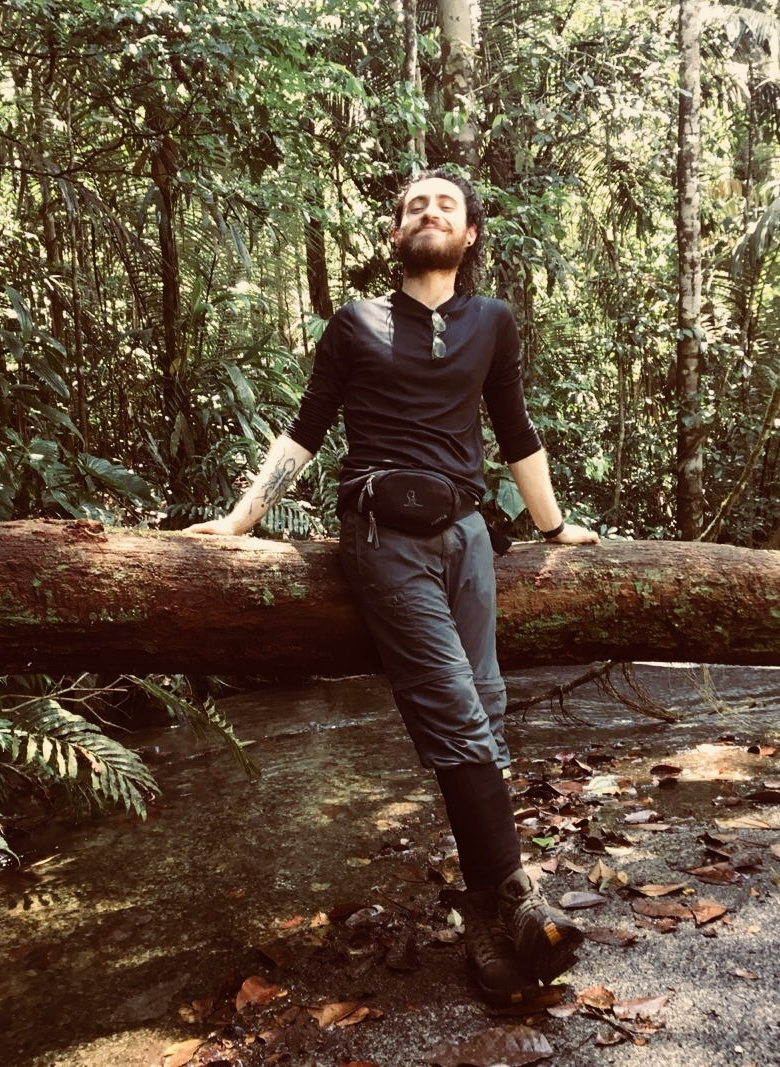 I am a PhD student at Universidade Federal do Paraná, Brazil, under supervision of Rodrigo Feitosa and Marcio Pie, focusing my research on the taxonomy of the genus Pheidole in the Atlantic Forest. Besides the taxonomy of the group, I am also interested in the geometric morphometrics tools to explore morphological evolution, integration and spatial variation. In Economo Unit, I have been working with microCT data to understand the integration between the mandible and head shape in Pheidole and trying to correlate these variations with food preference.
I am a PhD student at Universidade Federal do Paraná, Brazil, under supervision of Rodrigo Feitosa and Marcio Pie, focusing my research on the taxonomy of the genus Pheidole in the Atlantic Forest. Besides the taxonomy of the group, I am also interested in the geometric morphometrics tools to explore morphological evolution, integration and spatial variation. In Economo Unit, I have been working with microCT data to understand the integration between the mandible and head shape in Pheidole and trying to correlate these variations with food preference.
Masashi Yoshimura, Staff Scientist
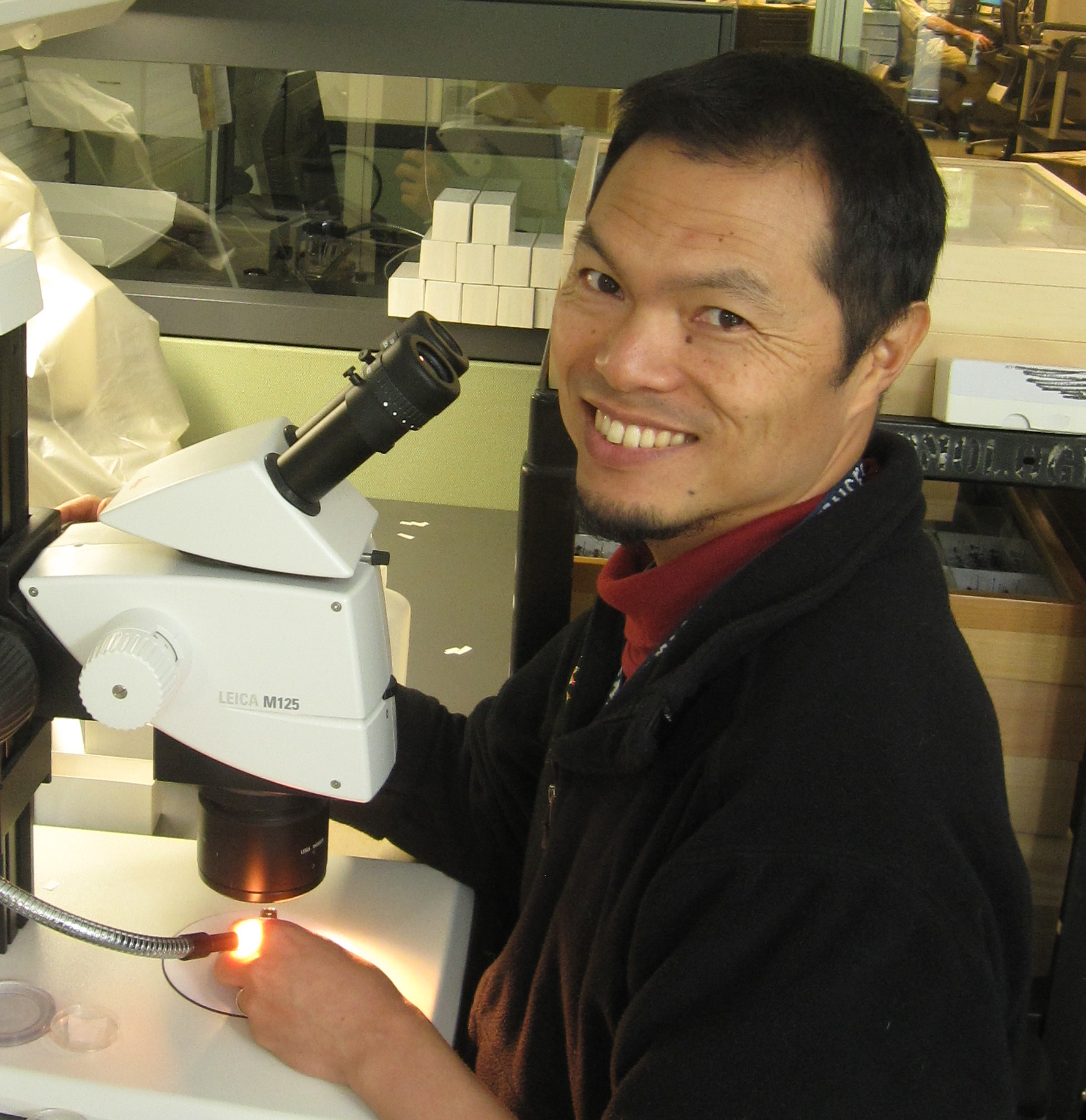 I am interested in morphological evolution and systematics of ants based on comparative studies using males. Male ants are unexplored resource for understanding ants’ evolution and diversity, because most part of our current morphological knowledge for ants is based on the workers, which are non-reproductive females. Detailed morphological examinations of male ants and male-female comparative studies following recent molecular phylogenetic studies will provide new remarkable characters that demonstrate their morphological evolution.
I am interested in morphological evolution and systematics of ants based on comparative studies using males. Male ants are unexplored resource for understanding ants’ evolution and diversity, because most part of our current morphological knowledge for ants is based on the workers, which are non-reproductive females. Detailed morphological examinations of male ants and male-female comparative studies following recent molecular phylogenetic studies will provide new remarkable characters that demonstrate their morphological evolution.
Contact Info and Websites:
Masako Ogasawara, Research Technician
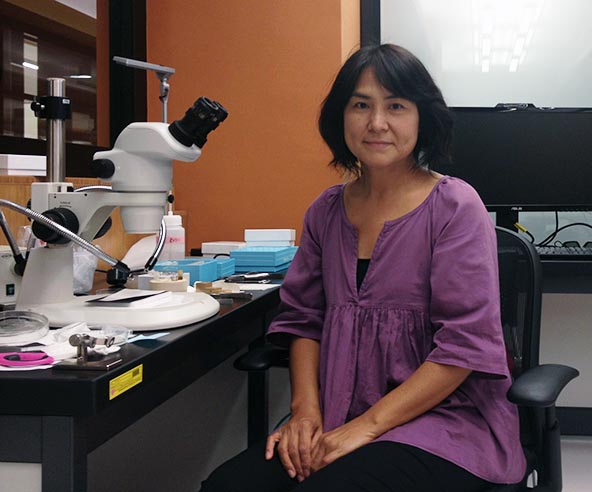 New to the world of ants, I am now learning about their biology. In Arilab I help processing the field samples and curating the ant collection. So far, I have had the chance to work with ants from different places around the world including Fiji islands, China and Okinawa! I am originally from Yokohama in Japan, but have lived in Okinawa for thirteen years where I enjoy every day the beautiful landscapes and nature of the island.
New to the world of ants, I am now learning about their biology. In Arilab I help processing the field samples and curating the ant collection. So far, I have had the chance to work with ants from different places around the world including Fiji islands, China and Okinawa! I am originally from Yokohama in Japan, but have lived in Okinawa for thirteen years where I enjoy every day the beautiful landscapes and nature of the island.
Mayuko Suwabe, Technician
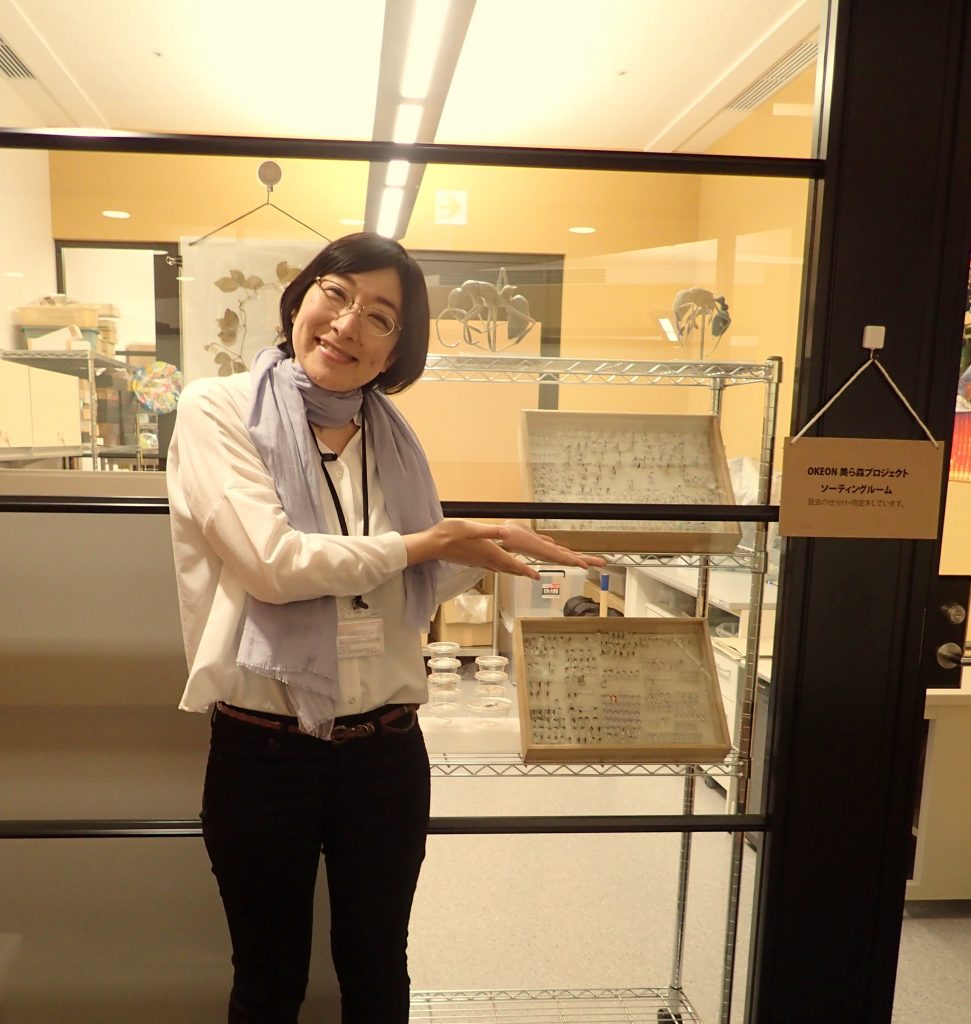 Until recently I have worked at the social educational facility as a coordinator of outdoor education for 8 years. I had taught some nature activities to school students and made cooperative relationships with the local communities. Before that, I studied the community ecology of ants in University of the Ryukyus, Okinawa. My research focused on the effects of forest disturbance on invasion of alien ants and distribution of native ants in the Yanbaru forest. At OIST, I am working as a research technician involved in OKEON (Okinawa Environment Observation Network) project and the fire ant management project of Okinawa.
Until recently I have worked at the social educational facility as a coordinator of outdoor education for 8 years. I had taught some nature activities to school students and made cooperative relationships with the local communities. Before that, I studied the community ecology of ants in University of the Ryukyus, Okinawa. My research focused on the effects of forest disturbance on invasion of alien ants and distribution of native ants in the Yanbaru forest. At OIST, I am working as a research technician involved in OKEON (Okinawa Environment Observation Network) project and the fire ant management project of Okinawa.
Takuma Yoshida, Technician
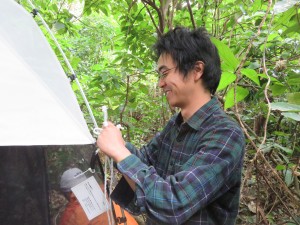 I studied the systematics of the parasitoid wasp family Ichneumonidae as part of my graduation thesis at the laboratory of Systematic Entomology, Hokkaido University. In order to get an idea of their diversity on a global scale, I have been putting a lot of effort into collecting, making and managing specimens, which also led me to become interested in collection management. I have experience as a curation assistant at the Hokkaido University Museum and Muséum National d’Histoire Naturelle of Paris and have been learning how to manage insect collections. At OIST I am involved in the OKEON (OKinawa Environment Observation Network) project. My task is to manage insect specimens collected for this project. I train para-taxonomists and guide them to collect and sort insect samples from twenty-four sampling sites set up around Okinawa.
I studied the systematics of the parasitoid wasp family Ichneumonidae as part of my graduation thesis at the laboratory of Systematic Entomology, Hokkaido University. In order to get an idea of their diversity on a global scale, I have been putting a lot of effort into collecting, making and managing specimens, which also led me to become interested in collection management. I have experience as a curation assistant at the Hokkaido University Museum and Muséum National d’Histoire Naturelle of Paris and have been learning how to manage insect collections. At OIST I am involved in the OKEON (OKinawa Environment Observation Network) project. My task is to manage insect specimens collected for this project. I train para-taxonomists and guide them to collect and sort insect samples from twenty-four sampling sites set up around Okinawa.
Adrian Richter, Visiting Research Student

I am a PhD student at Friedrich-Schiller-University in Jena, where I also did my Bachelor’s and Master’s with Rolf Beutel and Hans Pohl. Since my Bachelor thesis I have worked on insect anatomy and starting with my Master’s I started working on ants. For my PhD, I want to greatly expand upon the foundation I have formed with my Master’s thesis, investigating the morphological evolution of ants using a variety of modern and classical methods of anatomy. I am especially focusing on the skeletomuscular system which has been relatively neglected in ants so far. The first part of my project will be to investigate the ant head across the phylogeny. In the Economo Unit, I will start this project by analyzing the head morphology of the generalized, but phylogenetically far separated species Formica rufa and Brachyponera chinensis. My ultimate goal is to contribute to a better understanding of ant evolution on a phenotypic level.
Website:
April Lamb, Research Intern (Fall 2019)
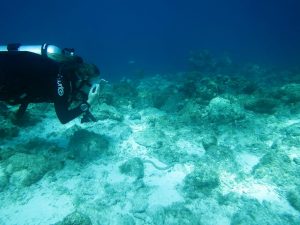
I am a research intern here in the Arilab and will be finishing my MS degree in Ecology and Evolution at North Carolina State University in the spring. Broadly speaking, I am fascinated with understanding the diversity we see around us. How is it created? How is it maintained? How does it change following the introduction of a stressor? To approach questions like these, I focus most of my research efforts on the largest groups of vertebrates – fishes. Here at OIST, I am working to understand the evolution of the teleost brain. Using high-resolution Micro-CT scans, I am segmenting out regions of the brain that are associated with specific sensory functions (vision, smell, motor control, etc) for over 30+ families of reef-associated fishes, a group widely known for having high levels of morphological and ecological diversity. Characterizing the shape of teleost brains has never been attempted for such a large diversity of fishes and will allow us to test interesting hypotheses about investment, tradeoffs, and ecological patterns in brain diversity. This work involves an international team of collaborators from OIST, the United States, and Germany and will compliment an assembled meta-dataset of morphological and isotopic data for collected and museum-cataloged specimens.
Website:
Michael Izumiyama, Rotation Student (Fall 2019)
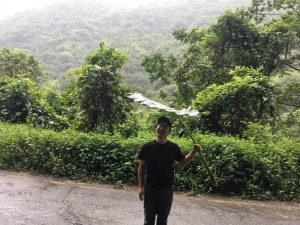
I graduated from San Francisco State University with an MS in marine biology. I am interested in the biodiversity of fishes. For my rotation project, I will be examining CT scans of fish brains to look for a correlation between brain morphology and ecology across various taxa to determine if certain ecological factors contribute to trends in the evolution of brain morphology.
Mohamed Boubakour, Rotation Student (Fall 2019)
During my rotation, I was using the OKEON database to build a model to predict the abundance (population number) of ant species in Okinawa.
Georg Fischer, Postdoctoral Researcher
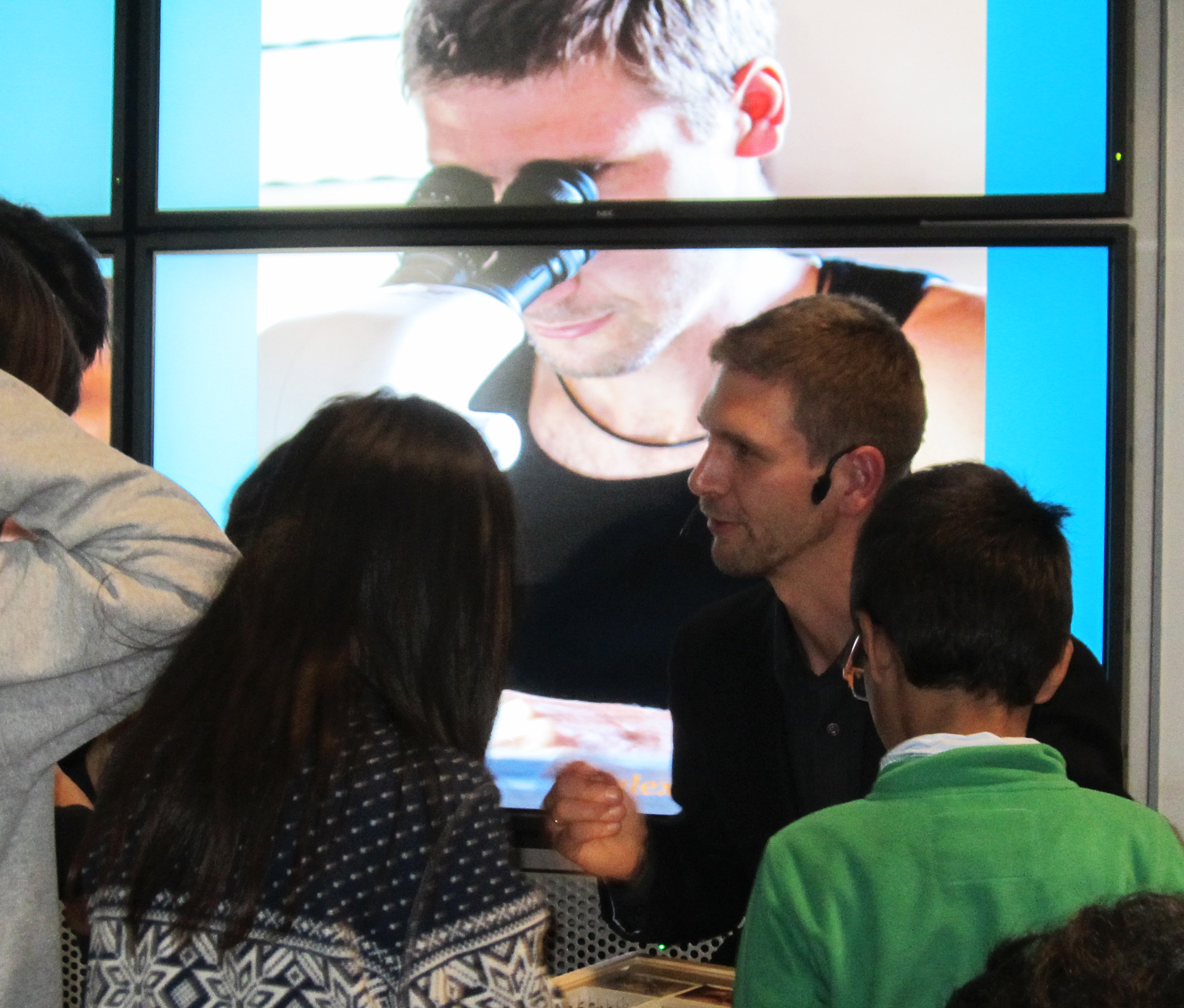 I am interested in ant community ecology as well as biogeographic and evolutionary patterns, especially of diverse tropical ant assemblages. A big part of my work in the last years and during my current project is the taxonomy, biogeography and evolution of the extremely species rich and ecologically highly diverse genus Pheidole, and recently also of the genus Carebara, both of which are characterized by a pronounced worker differentiation into di- and polymorphic subcastes respectively. In both genera there are several cases of species which don’t follow the general “rules” and either developed an additional worker subcaste (often named supersoldiers or supermajors) or lost one or more of their worker castes. I’d like to find out more about their respective ecologies and possible underlying evolutionary patterns.
I am interested in ant community ecology as well as biogeographic and evolutionary patterns, especially of diverse tropical ant assemblages. A big part of my work in the last years and during my current project is the taxonomy, biogeography and evolution of the extremely species rich and ecologically highly diverse genus Pheidole, and recently also of the genus Carebara, both of which are characterized by a pronounced worker differentiation into di- and polymorphic subcastes respectively. In both genera there are several cases of species which don’t follow the general “rules” and either developed an additional worker subcaste (often named supersoldiers or supermajors) or lost one or more of their worker castes. I’d like to find out more about their respective ecologies and possible underlying evolutionary patterns.
Masato Hirota, Rotation Student (Winter 2020)
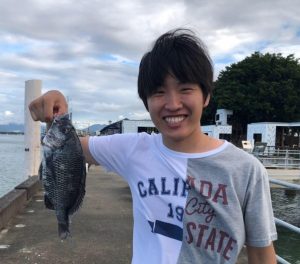
I am a 1st year PhD student and currently doing out of field lab rotation in this unit. My background is in Immunology and I will use OKEON ant database to build a model to predict the environmental factors which drive ant community in Okinawa.
Kota Ishikawa, Rotation Student (Winter 2020)
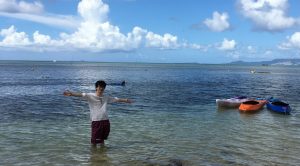
I worked on the hematology of Xenopus in the previous university to get a wide range of skills and knowledge about molecular and physiological experiments. But, I’m more interested in animal ecology, especially behavioral ecology. In this lab, I’m working on the sound data collected as a part of the OKEON project and analyzing the cicadas calling period because they relatively have a wide frequency range and thus play a major role in the acoustic environment.
Kenneth Dudley, GIS & Remote Sensing Technician
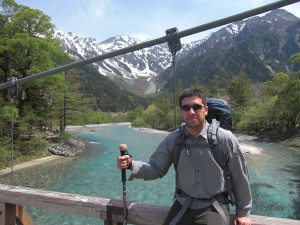 I graduated from the University of Utah with undergraduate degrees in Geography, Japanese, and Environmental & Sustainability Studies. I then continued my studies in geography and obtained an MS in Geography at the University of Utah. My primary area of interest is remote sensing of vegetation using multispectral and hyperspectral datasets. I work with GIS and remote sensing datasets to study and model environmental phenomena. In my free time I create and update tools to improve processing of remote sensed images using Python and ENVI/IDL.
I graduated from the University of Utah with undergraduate degrees in Geography, Japanese, and Environmental & Sustainability Studies. I then continued my studies in geography and obtained an MS in Geography at the University of Utah. My primary area of interest is remote sensing of vegetation using multispectral and hyperspectral datasets. I work with GIS and remote sensing datasets to study and model environmental phenomena. In my free time I create and update tools to improve processing of remote sensed images using Python and ENVI/IDL.
Nick Friedman, Postdoctoral Researcher
 I am interested in the origins of biodiversity: how did we get so many species, and how did they get to be so different from one another? My research focuses primarily on trait evolution, examining the history of evolutionary change, how trait physiological has changed, and what selective context explains the cause of that change. I use the Australian honeyeaters and allies (Meliphagoidae) as a model clade to study the evolution of morphology and elaborate plumage coloration in birds. I want to understand how these traits are driven by natural and sexual selection in different ways across the various biomes of Australia and Papua New Guinea. In the Biodiversity and Biocomplexity Unit at OIST, I also use these phylogenetic comparative approaches to explore patterns and mechanisms of diversification and disparification in ants.
I am interested in the origins of biodiversity: how did we get so many species, and how did they get to be so different from one another? My research focuses primarily on trait evolution, examining the history of evolutionary change, how trait physiological has changed, and what selective context explains the cause of that change. I use the Australian honeyeaters and allies (Meliphagoidae) as a model clade to study the evolution of morphology and elaborate plumage coloration in birds. I want to understand how these traits are driven by natural and sexual selection in different ways across the various biomes of Australia and Papua New Guinea. In the Biodiversity and Biocomplexity Unit at OIST, I also use these phylogenetic comparative approaches to explore patterns and mechanisms of diversification and disparification in ants.
Website:
Nao Takashina, JSPS Postdoctoral Researcher
 I am a theoretical ecologist primary interested in ecosystem management and conservation biology where trade-offs between ecological and socioeconomic benefits are widely observed in practice. To address this dilemma, I try to develop frameworks for decision-making processes for better management and conservation actions. My ongoing projects include developing ecological sampling theory and methods for population estimation to provide required (not necessarily be perfect) ecosystem information at a minimal cost and time, as well as understanding effect of marine protected areas from a broad point of view (e.g., their optimal size and spatial structure, and impact on competition between fishers in terms of game theory).
I am a theoretical ecologist primary interested in ecosystem management and conservation biology where trade-offs between ecological and socioeconomic benefits are widely observed in practice. To address this dilemma, I try to develop frameworks for decision-making processes for better management and conservation actions. My ongoing projects include developing ecological sampling theory and methods for population estimation to provide required (not necessarily be perfect) ecosystem information at a minimal cost and time, as well as understanding effect of marine protected areas from a broad point of view (e.g., their optimal size and spatial structure, and impact on competition between fishers in terms of game theory).
Susan Kennedy, Postdoctoral Researcher

I’m interested in applying high-throughput methods to understand the biodiversity, network structure, and functional traits of arthropod communities. I’m currently working on a project characterizing arthropod biodiversity across multiple Pacific archipelagoes, using metabarcoding of mixed samples to obtain high data yields at low cost. We’re also using molecular gut content analysis to characterize trophic relationships among these arthropods. By comparing arthropod communities in several island systems and across temporal, spatial and disturbance gradients, we can understand how the structure and function of these communities change over time and in response to environmental perturbation. For my PhD (UC Berkeley, Prof. Rosemary Gillespie), I used similar methods to assess how trophic ecology changes over evolutionary time within the adaptive radiation of Hawaiian Tetragnatha (long-jawed orbweaver) spiders. While I find all arthropods fascinating, spiders are my first love, and one of my personal goals has always been to share my enthusiasm for these marvelous little animals – to convert arachnophobes into arachnophiles wherever I go. Spiders and insects are among the most phylogenetically, ecologically and behaviorally diverse organisms in the world, and they have a tremendous amount to tell us about life on Earth.
Yuka Suzuki, PhD Graduate
 I am interested in theoretical and computational study in biology. I used computer simulation to study protein conformation change while an undergraduate. I have been specifically excited about network concept in biology, and generally interested in ecology too, so I have decided to work on networks in ecology by applying network theory to them. I have analyzed habitat distribution networks of ants. I am currently studying larval dispersal connectivities among coral reefs using both theoretical and realistic connectivity networks.
I am interested in theoretical and computational study in biology. I used computer simulation to study protein conformation change while an undergraduate. I have been specifically excited about network concept in biology, and generally interested in ecology too, so I have decided to work on networks in ecology by applying network theory to them. I have analyzed habitat distribution networks of ants. I am currently studying larval dispersal connectivities among coral reefs using both theoretical and realistic connectivity networks.
Evropi Toulkeridou, PhD Graduate
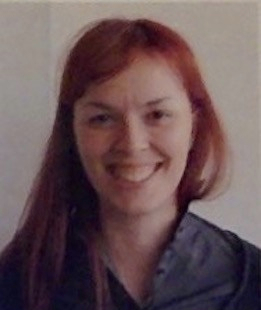 I have a degree in mathematics and a MSc in theoretical informatics, both at the Aristotle University of Thessaloniki, Greece. I have joined OIST as a PhD student since last year to study computational biology. My current research interest is on computer vision and, more specifically, its application for the analysis of microCT data.
I have a degree in mathematics and a MSc in theoretical informatics, both at the Aristotle University of Thessaloniki, Greece. I have joined OIST as a PhD student since last year to study computational biology. My current research interest is on computer vision and, more specifically, its application for the analysis of microCT data.
Dan Warren, Staff Scientist
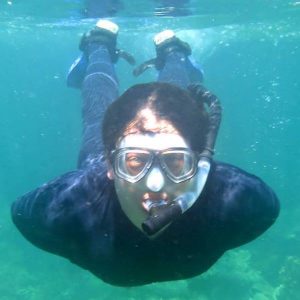
I work very broadly across evolution, ecology, and conservation biology, with a particular focus on developing quantitative methods. I’m involved in the development of several widely used software packages including AWTY, RWTY, and ENMTools. My field research is primarily in reef fish, but I have been involved in collaborative projects on everything from wild tomatoes to deep sea invertebrates. My current projects include comparative studies looking at the ecological drivers of diversity in fish brains, using ultraconserved elements to infer the cephalopod tree of life, and new methods for estimating uncertainty and bias in species distribution models.
Nurit Eliash, Postdoctoral Researcher
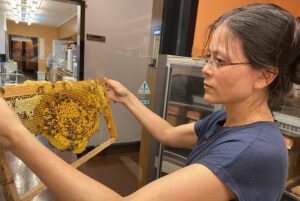
My main research interests are host-parasite co-evolution and the key traits that facilitate it. I completed my PhD. at the Hebrew University and the Agricultural Research Organization (ARO), at the Chemoecology lab of Dr. Vicky Soroker. Using chemical ecology, molecular biology, and transcriptomic approaches, I was investigating the interaction of the honeybee and its horrible parasite, the Varroa mite. However, while writing the last chapter of my thesis, I got intrigued by broader questions about this system evolution, and so I, fortunately, find myself in Sasha’s lab. Currently, I’m interested in tackling host- parasites interactions through understating their co-evolution. By combining physiological studies and meta-omics analysis we use the triangle of honey bee – varroa mite – and their vectored viruses, as a model system aiming to reveal the mechanisms underlying host-parasite co-evolution. In the lab, I’m trying to balance between “wet-lab” experiments, playing with bees and mites in the hive, and running analysis/writing on the computer. Born and raised on a top of a mountain in the north of Israel, Okinawa’s dreamy beaches and tropical forests are inspiring new sceneries for my family’s adventures. I love to explore them with my partner, Neri, and our two offsprings, Anna and Naama. Most of the time I am just surprised at being able to make a living from asking questions, reading fascinating stuff, and playing with insects. I can say I am a grateful entomologist:)
Leonardo Tozetto, Research Intern
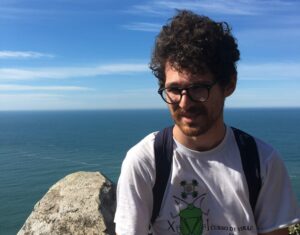
I am a biologist interested in the biodiversity and evolution of insects, including cataloging and description. I finish my master’s degree in Entomology at the Federal University of Paraná studying army ants flight phenology and its environmental drivers, along with taxonomy and comparative morphology. My current research interest is on ant’s morphological evolution and functional aspects using 3D models, geometric morphometrics, and biomechanical analyses.
Francisco Hita Garcia, Staff Scientist
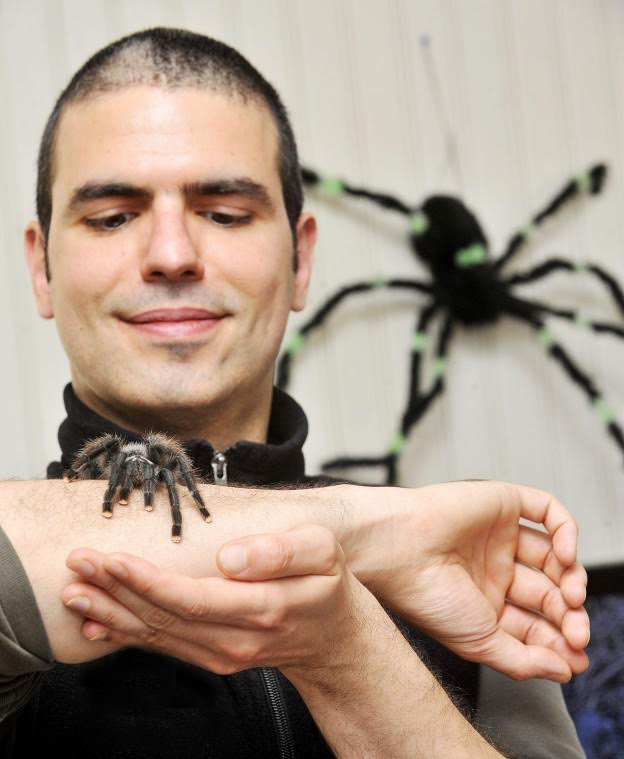 I am a systematicist interested in the biodiversity and evolution of ants on different spatial and organismal scales. My aim is to explore and document nature in order to increase our understanding of the biological patterns and processes that have shaped our planet’s biodiversity. My research broadly encompasses taxonomy, phylogenetics, and biogeography of ants. The backbone of my research is the revisionary taxonomy of a variety of ant genera based on an integrative approach combining traditional comparative morphology with modern techniques, such as phylogenomics and 3D modelling based on x-ray micro computed tomography. One of my current projects focuses on the evolution and biogeography of the African/Malagasy genus Terataner using next generation sequencing. The other large project I work on is the global phylogenomic study of the hyperdiverse genus Tetramorium. I want to reconstruct the evolutionary history of the genus to determine which underlying macroevolutionary and macroecological processes have led to its global success.
I am a systematicist interested in the biodiversity and evolution of ants on different spatial and organismal scales. My aim is to explore and document nature in order to increase our understanding of the biological patterns and processes that have shaped our planet’s biodiversity. My research broadly encompasses taxonomy, phylogenetics, and biogeography of ants. The backbone of my research is the revisionary taxonomy of a variety of ant genera based on an integrative approach combining traditional comparative morphology with modern techniques, such as phylogenomics and 3D modelling based on x-ray micro computed tomography. One of my current projects focuses on the evolution and biogeography of the African/Malagasy genus Terataner using next generation sequencing. The other large project I work on is the global phylogenomic study of the hyperdiverse genus Tetramorium. I want to reconstruct the evolutionary history of the genus to determine which underlying macroevolutionary and macroecological processes have led to its global success.
Kosmas Deligkaris, Research Computing Technician
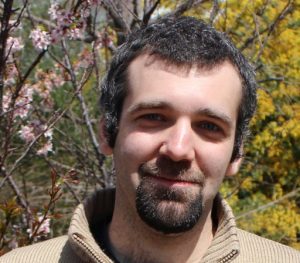 I graduated from Osaka University with a PhD in Frontier Biosciences. Since then, I worked in various organizations, such as University College London and Public Health England, utilizing my background in Engineering and Biology in order to conduct research and technical analysis. I am also interested in research reproducibility and transparency of research practices through the use of IT technologies within the academic environment. In the Economo lab, I support my colleagues with their computational needs in various pieces of work, such as the OKEON project, overseeing its IT infrastructure, and establishing systems for metadata management.
I graduated from Osaka University with a PhD in Frontier Biosciences. Since then, I worked in various organizations, such as University College London and Public Health England, utilizing my background in Engineering and Biology in order to conduct research and technical analysis. I am also interested in research reproducibility and transparency of research practices through the use of IT technologies within the academic environment. In the Economo lab, I support my colleagues with their computational needs in various pieces of work, such as the OKEON project, overseeing its IT infrastructure, and establishing systems for metadata management.
Jamie Kass, JSPS Postdoctoral Researcher
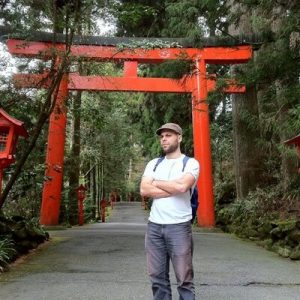
I am a biogeographer and spatial ecologist interested in ecological niches, community ecology, geospatial analyses, and statistical modeling. My doctoral work focused on incorporating biotic interactions into traditionally abiotic species distribution models, and how considering them can have benefits for invasive species management and conservation of threatened species. I also developed an interactive software called Wallace (R package wallace), which provides an interface that guides users through a species distribution modeling analysis from start to finish with connections to open databases and tools for reproducibility. Additionally, I am a developer of other R packages for ecological analysis, including ENMeval and rangeModelMetadata. As a JSPS Postdoctoral Fellow at the Biodiversity and Biocomplexity Unit at OIST, I will be working with the OKEON ant dataset and fine-scale environmental data to develop community models for Okinawa that can predict species composition and richness across space, and will be exploring how co-occurrence with invasive species affects occupancy of native species.
Arthur Matte, Research Intern
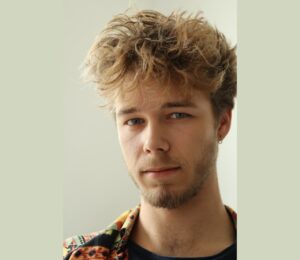
Presently doing my MSc at the University of Montpellier in France, I am interested in the stories that evolution tells us. Ants are among the rare organisms to have extended reproductive division labor beyond the multicellular organism. However, the degree of specialisation between reproductive and worker castes varies considerably between ant lineages and my research seeks to understand why. More precisely, what are the driving factors and the consequences of these major transitions both morphological and social.
Here in Arilab, by combining comparative anatomy using µ-CT, and phylogenetic analysis methods, I am trying to decipher the evolution of cheaper, anatomically simplified workers. This feature is shared by ants with the most advanced division of labor and is expected to mark a key innovation in the evolutionary history of ants.
Jordan Drapin, Visiting Research Student
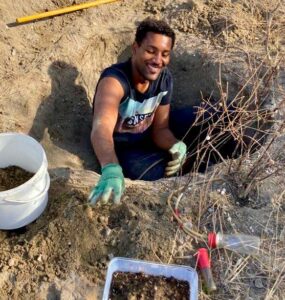
Currently a PhD student in Toulouse (CRCA) combining ethology, ecology and modeling approaches, I have a particular interest in the mechanisms that govern collective behavior to solve a task. From field to laboratory experiments until simulation, I am trying to understand how the biomechanic specificities of each ant in a group can help to solve a load carrying problem. For that I am currently working on a model that will combine the locomotion of the ants during a load transport and the properties of their legs muscles. Here in OIST, I want to improve my skills in ants morphology (acquisition, segmentation) to complete my model and expand my research perspectives.
Fumika Azuma, Research Technician

Upon completing my undergraduate studies, I first joined the Arilab as an intern to map the global distribution of all known ant species in order to identify species richness on a global scale. Now, as a technician, I will continue with this project, while assisting lab members through micro-CT scanning and specimen curation. My interests lie in understanding the roles of historical and contemporary factors in controlling the spatial pattern of diversity, especially in tropical ecosystems. For my undergraduate thesis, I utilised GIS and spatial packages in R to map and model mangrove regrowth trajectories in abandoned aquaculture ponds in Singapore.
Henry Cerbone, Research Intern (Summer 2023)
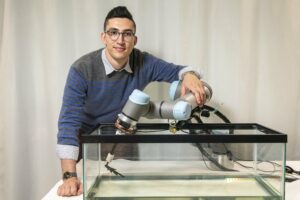
I recently received my undergraduate degree in robotics, philosophy, and biology from Harvard University. While at Harvard, I also received my master’s in computer science. After my time at OIST, I will begin as a graduate student in the Oxford Flight Group under Professor Graham Taylor as a Rhodes Scholar. During my undergraduate career, I primarily worked under Professor Robert Wood in the Harvard Microrobotics Lab. As I spent more time looking to biology for inspiration for robotics, I found myself drawn in by fundamental questions of form and function in organisms. This led me to do fieldwork in Arizona under Deborah Gordon (working with harvester ants) and write an undergraduate thesis on the water-running of basilisk lizards. I am interested in utilizing modern techniques such as 3D imaging, motion capture, and robotic models to better understand how animals exist in the world. I have previously done research in robotics (EPFL, Harvard), biology (Harvard, Stanford), and philosophy (Harvard). I have ongoing research projects in evolutionary graph theory w/ Martin Nowak, adaptation in birds of prey w/ Scott Edwards, and philosophy of biology.
Minsoo Dong, Research Intern (Summer 2023)
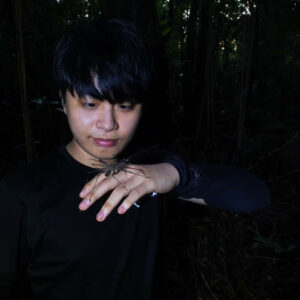 The beauty of ants has led me to explore the forests of North and South America, East Africa, Russia, Japan, Indochina, Borneo, Sumatra, and Sulawesi. I obtained my Bachelor’s degree from Kangwon National University in Korea, and during my time there, I published several books on Korean ants. Prior to joining OIST, I worked as a research assistant at the National Institute of Biological Resources in Korea. My research interests revolve around the evolution of ant morphology. Currently, I am interested in the surprising morphological similarities between Neotropical fungus-growing ants and some Oriental hypogeic scavengers, such as Proatta and Dacatria. I do believe that such striking similarities within groups, which cannot be explained by convergent evolution, may shed new light on the factors influencing morphology and evolution. Additionally, I am interested in studying the adaptation of Aphaenogaster ants across East Asia, as well as the convergent evolution tendencies of ants in desert environments. Other research areas that interest me include estimating paleo-ecological niche of fossil ants, developing male-based taxonomic keys for ants, utilizing 3D modeling techniques, and species delimitation.
The beauty of ants has led me to explore the forests of North and South America, East Africa, Russia, Japan, Indochina, Borneo, Sumatra, and Sulawesi. I obtained my Bachelor’s degree from Kangwon National University in Korea, and during my time there, I published several books on Korean ants. Prior to joining OIST, I worked as a research assistant at the National Institute of Biological Resources in Korea. My research interests revolve around the evolution of ant morphology. Currently, I am interested in the surprising morphological similarities between Neotropical fungus-growing ants and some Oriental hypogeic scavengers, such as Proatta and Dacatria. I do believe that such striking similarities within groups, which cannot be explained by convergent evolution, may shed new light on the factors influencing morphology and evolution. Additionally, I am interested in studying the adaptation of Aphaenogaster ants across East Asia, as well as the convergent evolution tendencies of ants in desert environments. Other research areas that interest me include estimating paleo-ecological niche of fossil ants, developing male-based taxonomic keys for ants, utilizing 3D modeling techniques, and species delimitation.
Kaylin Chong, Visiting Research Student (Spring 2024)
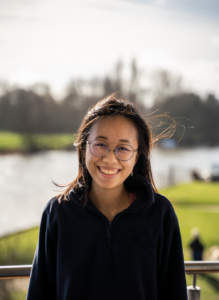
I am an evolutionary biologist with a keen interest in arachnid phylogenetics and functional morphology. My previous research focused on unraveling the mysteries behind the evolution of eye size in spider visual systems, using morphological data and phylogenetic approaches. Currently, I am now exploring the morphological diversity and evolution of tick mouthparts using comparative functional morphology and phylogenetics. As a visiting researcher at Arilab, I will become familiar with 3D imaging workflows and morphometric techniques to apply to my research.
Graceanne Tarsa, Research Assistant
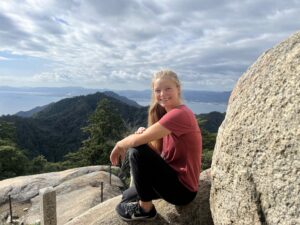
My background is actually in aquatic biology, both freshwater and marine environments. My family moves a lot which has provided me the opportunity to study invasive species in the Great Lakes, manage shellfish resources for tribal communities, and now, learn about ants in the Economo lab. While each position has had its own unique flair, each has involved organizing, managing, and visualizing large datasets. As a research technician, I am working to update GABI to ensure that recent additions to the collective understanding of global ant biodiversity are accessible to fellow researchers and community members.
Leonardo Tozetto, PhD Student
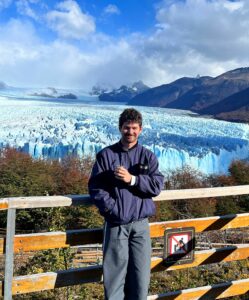
I am an entomologist interested in the evolution and diversity of life. After completing my Msc degree in Entomology at the Universidade Federal do Paraná in Curitiba, I joined the Arilab driven by the curiosity towards ant’s morphological evolution. The research areas I am most interested in includes morphology, evolution, and biomechanics. Currently, I am investigating the trap-jaw morphology and metamorphosis in Strumigenys. When I am outside the office, I am hiking or snorkeling.
Jocelyn Wang, Research Intern
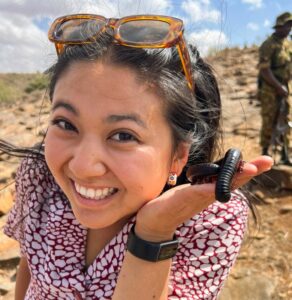
I am an entomologist and ecologist generally interested in insects, plants, and their interactions, particularly ant-plants and myrmecophiles. I finished my undergraduate studies in organismic and evolutionary biology at Harvard, conducting field research and writing my thesis on the bottom-up effects of soil micronutrients on the African ant-acacia Vachellia drepanolobium and its obligate ant-inhabitants. For a year after college, I continued my research which included a 3-month field season in central Kenya and helped teach an entomology course at Harvard.
As an intern in the Arilab, I am hoping to learn more about insect morphology and evolution through studying local species. In particular, I plan to investigate the relationship between Pristomyrmex punctatus and Narathura japonica through natural history observations, behavioral experiments, and micro-CT scanning.
Hlib Burtsev, Research Intern
 I’m Hlib from Kyiv, Ukraine. I just finished my second year of Undergraduate studies at Brown University, RI, USA, so I am only an aspiring entomologist for now. My interests span from quantum mechanics to taxonomy as long as there are ants involved! I am particularly drawn to their diversity and phylogenetics. During my short time at OIST, I hope to develop a project which will help me to narrow down my interests within the ant studies and acquire experience of working with CT-scanning, relevant programming skills, and find out more about the academia work in general.
I’m Hlib from Kyiv, Ukraine. I just finished my second year of Undergraduate studies at Brown University, RI, USA, so I am only an aspiring entomologist for now. My interests span from quantum mechanics to taxonomy as long as there are ants involved! I am particularly drawn to their diversity and phylogenetics. During my short time at OIST, I hope to develop a project which will help me to narrow down my interests within the ant studies and acquire experience of working with CT-scanning, relevant programming skills, and find out more about the academia work in general.
Adrian Richter, JSPS Postdoctoral Fellow
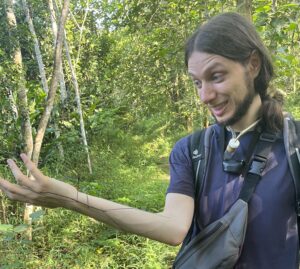
I am an entomologist focusing ants and other hymenopterans. The research areas I am most interested in are insect morphology and evolution, as well as systematics and taxonomy. The main goal of my research is to understand the phenotypic evolution of insects and how it shaped their past and present diversity.
I started my scientific work studying the morphology of female Strepsiptera in Jena, Germany. After this, I have mostly focused on the ant head in my master and PhD projects, trying to find out how head structures such as muscles and the mouthparts changed in the earliest stages of ant evolution. Especially important for this were some investigations on fossil ants, particularly stem group ants from the cretaceous period.
In my project as a postdoc here at OIST I want to expand my morphological research to the whole digestive system of ants. Using mostly µCT scan data, I want to study its macroevolution in relation to ant feeding preferences and other aspects of ecology and behavior.
Alexandre Casadei Ferreira, Postdoctoral Scholar
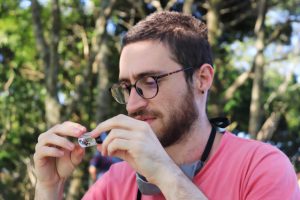
I am an Entomologist, and my research interests encompass systematics and taxonomy, biogeography, and morphological evolution of ants. For the last years, I worked with the ant genus Pheidole, focusing on its taxonomy and morphological evolution using a geometric morphometric framework to understand patterns of variation, integration, and modularity within and between its sub-castes. My current projects at Biodiversity and Biocomplexity Unit include comparative ant anatomy using 3D modeling, combined with geometric morphometrics and phylogenetic approaches to understand its morphological diversity and evolutionary history.
Azumi Kudaka, Research Assistant
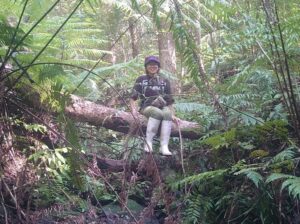 I was previously a research intern at Arilab and am now back as a research assistant. Before joining Arilab, I studied at the University of the Ryukyus in Okinawa. During my bachelor’s and master’s, I studied ant fauna found on some Ryukyu Islands and analyzed the relationship between types of environment and ant diversity. My main tasks in the lab are to care for specimens and work on my research. My current research project studies the taxonomy of the genus Rhopalomastix in the Ryukyu Islands using morphological and phylogenetic analyses. I also work with OKEON to conduct workshops at high schools in Okinawa.
I was previously a research intern at Arilab and am now back as a research assistant. Before joining Arilab, I studied at the University of the Ryukyus in Okinawa. During my bachelor’s and master’s, I studied ant fauna found on some Ryukyu Islands and analyzed the relationship between types of environment and ant diversity. My main tasks in the lab are to care for specimens and work on my research. My current research project studies the taxonomy of the genus Rhopalomastix in the Ryukyu Islands using morphological and phylogenetic analyses. I also work with OKEON to conduct workshops at high schools in Okinawa.
Miyuki Suenaga, Research Technician
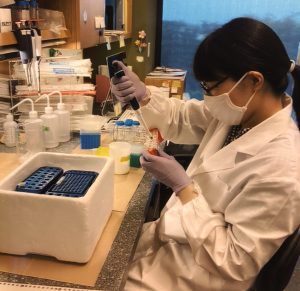
I am a technician working on molecular biology experiments in the Economo Unit, including metabarcoding of OKEON samples, invasive species detection, genomic library preparations, and others. I was born and raised in Fukuoka. I finished my master’s degree in Agricultural Science at Kyushu University, studying positive effects of functional food on metabolic diseases. I have previously worked at Ecology and Evolution Unit for 4 years and am experienced with DNA/RNA isolation from diverse organisms (fish, honeybee, mite, ant, and spider) and several library preparation methods for NGS platforms.
Dimitris Petsopoulos, Research Computing Technician
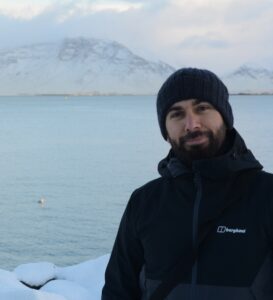
I am an applied ecologist and my research focus till now has been on developing computational and molecular tools to monitor organisms and understand how they respond to change. Recently, I just finished my PhD at Newcastle University (UK) where I worked with large datasets from various high-throughput sequencing technologies with an aim of scaling up insect monitoring within the UK. In the Economo Lab, I am working as a research computational technician with a main task of helping our group members with their computing needs and managing the lab’s databases & websites.
Gaurav Agavekar, PhD Graduate
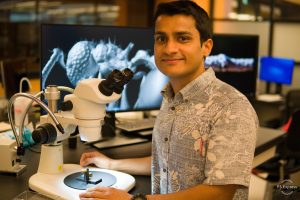
My interest in biodiversity research initially arose through an obsession with the documentation and photography of butterflies in the Western Ghats of India, where I grew up. Before starting my PhD at OIST, I did a master’s in Wildlife Biology and Conservation at NCBS, Bangalore. For my PhD thesis, I aim to study the genomic architecture of convergent evolution in a group of fascinating ants called Strumigenys. To this end, I take comparative genomics and transcriptomics approaches in conjunction with fieldwork to study the genomes and gene expression patterns in the independent evolutions of the ultrafast trap-jaw mandibles in Strumigenys ants.
Please visit my website to know more about me!
Yazmín Zurápiti, PhD Graduate
I am interested in understanding how networks of interactions work. What are the rules behind them, what features stabilize them, and what makes them resilient or vulnerable, and how changes in one level permeates (cascades) to others.
Shubham Gautam, PhD Graduate
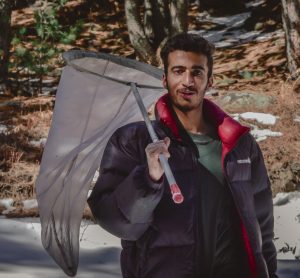 Growing up interacting with various kinds of animals and plants in a quaint Himalayan town of India, I’ve always been fascinated by the diversity of life around us. My curiosity about understanding the natural world, led me to pursue a master’s in wildlife biology and conservation at NCBS, Bengaluru. I studied thermal ecology and morphological plasticity in wing color characteristics of Pierid butterflies for my master’s thesis. After my master’s, I spent a year studying plasticity in reproductive traits of Himalayan oak trees in response to excessive anthropogenic thinning of these forests. These past projects shaped my current and long-term research interests, i.e., understanding the ecological and evolutionary causes and consequences of developmental plasticity in organisms. My approach to research is question oriented and I am most interested in answering fundamental questions in ecology and evolutionary biology.
Growing up interacting with various kinds of animals and plants in a quaint Himalayan town of India, I’ve always been fascinated by the diversity of life around us. My curiosity about understanding the natural world, led me to pursue a master’s in wildlife biology and conservation at NCBS, Bengaluru. I studied thermal ecology and morphological plasticity in wing color characteristics of Pierid butterflies for my master’s thesis. After my master’s, I spent a year studying plasticity in reproductive traits of Himalayan oak trees in response to excessive anthropogenic thinning of these forests. These past projects shaped my current and long-term research interests, i.e., understanding the ecological and evolutionary causes and consequences of developmental plasticity in organisms. My approach to research is question oriented and I am most interested in answering fundamental questions in ecology and evolutionary biology.
Christine Sosiak, JSPS Postdoctoral Fellow
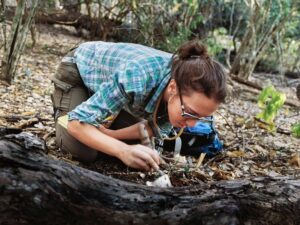
I am an entomologist and evolutionary biologist interested in patterns of extinction and diversification in insects in deep time. The research areas I am most interested in include patterns and mechanisms of extinction in the fossil record, new methods for paleoecological reconstruction of extinct communities, and mechanisms and drivers of morphological stasis in deep time. My previous research focused on understanding extinction dynamics in ants during the Cretaceous as a function of their estimated ecologies, through the synthesis of fossil, phylogenetic, and morphological data. At OIST, I plan to continue synthesizing such lines of evidence and expand my research to assess a variety of drivers of extinction and diversification in the ant fossil record, including interspecific competition, environmental change, and assessing lineage responses to such pressures, to ultimately understand what factors underlie selective extinction patterns in insects.
Larisa Kiseleva, Staff Scientist
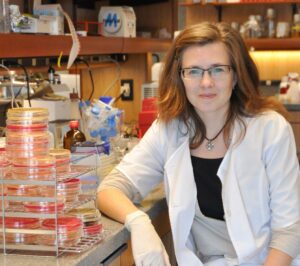
I learned methods of molecular biology during my PhD course and applied them later to study diverse biological processes: cell differentiation, cell electrogenicity, cell membrane fluidity regulation. Now I work on prediction bacteriophage genomes from metagenomic data. I hope to contribute to understanding of phage diversity at the genomic and community levels and their evolutionary relationships
Julian Katzke, PhD Graduate
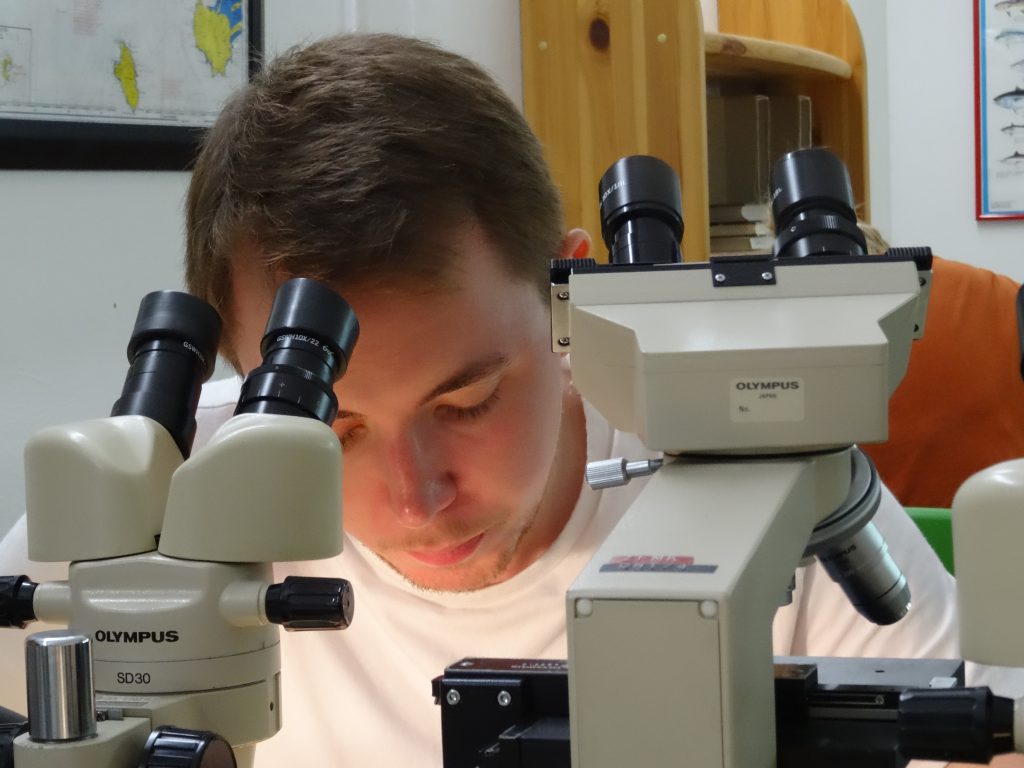
Insects are incredibly diverse and so are their ways of life. During my master’s in Bonn, I realized that these complexities span out into deep time I want to think of and answer questions on how insects reached this astounding level of diversity and what pathways they took in their evolutionary history. Ants are particularly interesting when we regard their emergence as social creatures and their rise to dominance and extreme diversity over a relatively short time span. Here in Arilab, I want to use modern techniques in data acquisition, visualization, and analysis.
